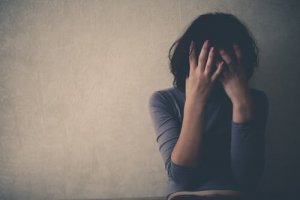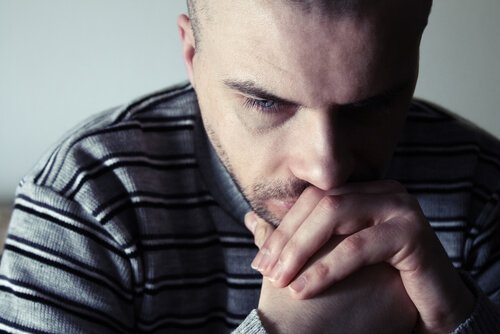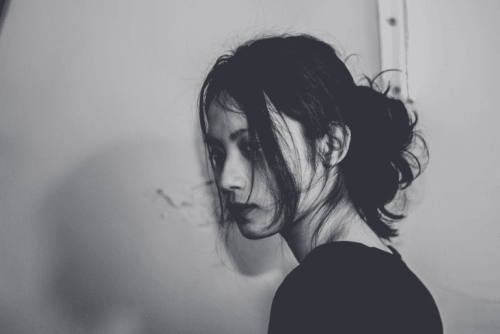Double Depression: Characteristics and Treatment


Written and verified by the psychologist Valeria Sabater
Double depression is when someone with dysthymia ends up suffering from major depression. The dissatisfaction with life, desperation, and fatigue the first condition causes can intensify until you end up in a dark and incapacitating psychological state.
It’s possible that you’ve never heard of this disorder. However, in the last 10 years, more and more patients (including teens) have suffered from a persistent depressive disorder (dysthymia) and major depression.
A study from the University of Illinois that was published in the Journal of Psychiatric Research shows that double depression manifests when dysthymia becomes chronic. People suffer from low motivation, constant sadness, fatigue, and despondency for years. Sooner or later, they’ll get to the point where they feel they’ve completely lost control of their lives.
When they reach this point and experience the resulting helplessness, their once mild depression becomes serious. That’s when they might experience anhedonia, feelings of guilt, and suicidal thoughts. As you can see, this is complex and challenging for mental health professionals. Treating the symptoms, understanding the root causes, and figuring out the best treatment for the patients’ needs isn’t easy. Let’s delve a little deeper into this.
“You largely constructed your depression. It wasn’t given to you. Therefore, you can deconstruct it.”
-Albert Ellis-

Double Depression: Symptoms and Causes
We mentioned that double depression is a serious complication of persistent depressive disorder (dysthymia). It’s worth noting that this term first appeared in the 1980s. However, experts didn’t clarify or define it more precisely until about ten years later. Here are some of its characteristics according to the new edition of the Diagnostic and Statistical Manual of Mental Disorders (DSM-5):
- Double depression stems from an existing persistent depressive disorder (dysthymia). In other words, the patient has spent a large part of their life in a despondent state. Patients with dysthymia might seem to function normally, but their disorder is chronic and causes low energy, sadness, and difficulty making decisions.
- Persistent depressive disorder tends to be hard to detect. Many people have it but are able to function and don’t need professional help. Nevertheless, at some point in their lives, they realize that their condition is worsening.
- Patients will suddenly lose interest in their surroundings. Nothing motivates or matters to them.
- Double depression can cause hypersomnia or insomnia.
- Other symptoms are slow movements and difficulty moving around or doing daily activities.
- Patients start to have suicidal thoughts (something that doesn’t happen with simple dysthymia).

What Causes Double Depression?
A 2013 study from Boston University published in Molecular Pharmacology shows that 10% of the population suffers from dysthymia. Of those, nearly 75% are at risk of developing double depression. The most common causes are:
- A chronic state of sadness and desperation eventually leads to other conditions: a poor diet, social isolation, and lack of motivation, among others. All of that slowly eats away at the patient’s everyday reality and eventually causes relationship problems, work problems, etc.
- This poor emotional state leads to bad quality of life. If dysthymia isn’t treated, it can get worse and eventually lead to serious depression.
Treatment for Double Depression
Interestingly enough, experts believe that serious depression is easier to treat than dysthymia. It’s important for people to seek treatment for persistent depressive disorder so it doesn’t turn into something worse.
Once doctors diagnose double depression, experts recommend the following course of action:
- Treatment with medication. According to a study by Hellerstein, Yanowitch, and Rosenthal published in the Journal of Psychiatric Research, treatment with serotonergic antidepressants can be very effective.
- Expressive and emotional therapies can also help liberate, channel, and transform emotions.
- Another highly recommended strategy is cognitive-behavioral therapy along with practices such as cognitive restructuring. These help patients modify dysfunctional beliefs and replace them with others.

Last but not least, it’s important for you to seek professional help if you’re experiencing chronic sadness that won’t go away. Living in this state of recurrent dysthymia puts you on the edge of a dangerous cliff. You can avoid falling off by seeking professional help. Don’t wait until it’s too late.
This text is provided for informational purposes only and does not replace consultation with a professional. If in doubt, consult your specialist.








